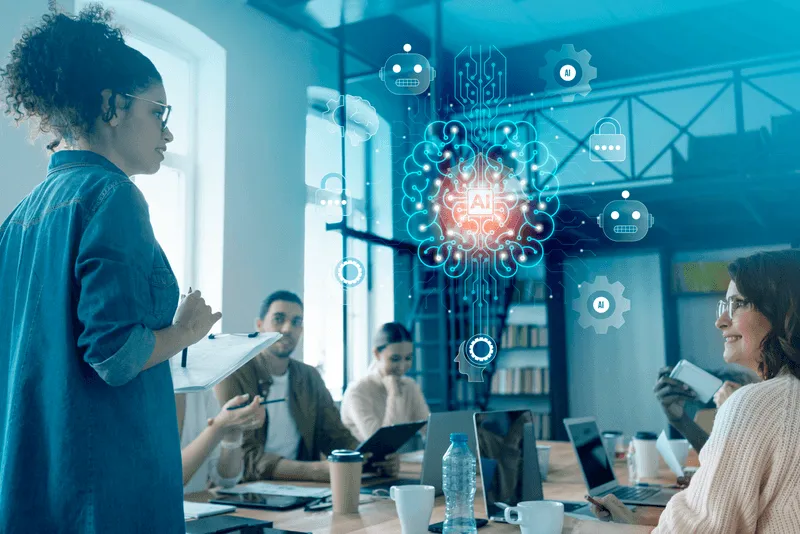BoldThe advancement and widespread adoption of generative AI and large language models (LLMs) have made this potential more accessible than ever before. Tools like ChatGPT, Llama, and Claude exemplify the capabilities of technology to mimic human-like critical thinking and provide accurate responses. The evolution of AI assistants goes beyond the familiar names of Siri, Alexa, and Cortana. Today's AI can handle complex tasks across various departments, from finance to marketing and operations.
In today's landscape, the concept of AI workers, once confined to the realms of science fiction, has become a tangible reality. Contrary to the dystopian narratives often depicted in movies like I, Robot, I firmly believe that integrating AI into the workforce presents immense potential for businesses, both in the short and long term.
Striking a Balance between Digital and Human Employees
Successful enterprises are now building teams that combine digital and human talent. The key lies in leaders' ability to discern where AI can drive impact and where human judgment is indispensable for project success.
Reducing Human Intervention for Efficiency
Incorporating AI into the fabric of a company is imperative for survival and growth in an increasingly competitive market. The optimal blend of AI and human resources is crucial for maximizing efficiency and profitability.
Leveraging AI Strengths
AI excels in tasks requiring fast computation, data analysis, pattern recognition, and automation, surpassing human capabilities in these domains.
Harnessing Human Intelligence
While AI handles routine tasks efficiently, human employees contribute strategic thinking, creativity, emotional intelligence, and nuanced decision-making essential for complex business scenarios.
Promoting Collaboration for Enhanced Performance
Effective collaboration between digital and human resources is essential for sustainable growth. Leaders must communicate the complementary roles of AI and humans within the organization and provide adequate training and support to employees.
Realizing Financial Benefits
Integrating AI into the workforce streamlines operations, reduces costs, and increases productivity. AI's ability to handle administrative tasks allows for more efficient hiring practices and higher output.
Mitigating Risks with AI
AI's pattern recognition capabilities enable proactive identification of disruptions and security threats, safeguarding intellectual property and building consumer trust.
Embracing AI for Sustained Growth
In today's competitive landscape, investing in a digital workforce is not just advantageous but essential for long-term success. A dynamic workforce that balances AI with human expertise ensures continuous improvement and growth for any enterprise.
In conclusion, the strategic integration of AI alongside human talent paves the way for efficient and sustainable business operations, positioning companies for success in the ever-evolving market.
